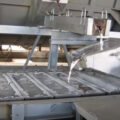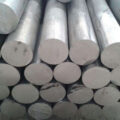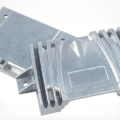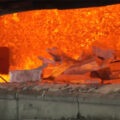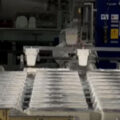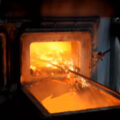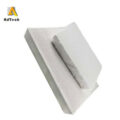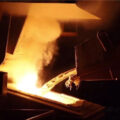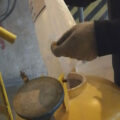Protruding bubbles appear on the surface of aluminum products, the ones that are complete are called bubbles, and the ones that have burst are called skin. They are mostly arranged in a linear manner in the extrusion direction, which can be judged by the naked eye. It mostly appears at the beginning and end of soft alloy products. The main reason is that the internal structure of the ingot has defects such as looseness, pores, internal cracks, or the extrusion speed in the filling stage is too fast, the exhaust is not good, and the air is drawn into the metal. When the ratio of the length to the diameter of the ingot is greater than 4-5, double drum deformation will occur during filling, creating a closed space in the middle of the extrusion cylinder. As the filling progresses, the volume of this space decreases and the gas pressure increases, which enters the microcracks on the surface of the ingot. These cracks are welded when passing through the mold, and bubbles are formed on the surface of the product, or skin is formed after failing to be welded out of the mold hole.

Bubbles on Aluminum Products Elimination Method
Improve the level of refining degassing and casting to prevent defects such as porosity, looseness, and cracks in the ingot.
Replace in time the lining of the extrusion cylinder with excessive wear. The cylinder should be thoroughly cleaned when replacing the alloy.
Slow down the speed of the extrusion filling stage.
Reduce the lubrication of the extrusion pad and mold.
Strictly operate, cut the residual material correctly and completely exhaust.
Using the ingot gradient heating method, even if the ingot head temperature is high and the tail temperature is low, the head deforms first when filling, and the gas in the cylinder is gradually discharged through the gap between the gasket and the wall of the extrusion cylinder.

